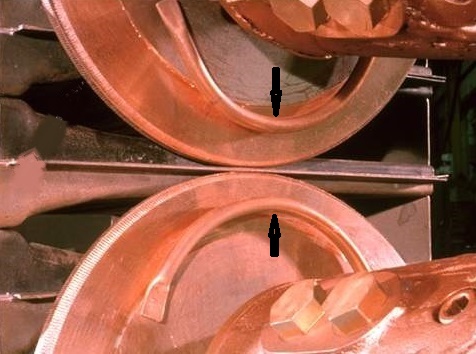I am going to assume that this question is being directed to the flood cooling water used in the seam welding process. This water may come from a cooling tower system and returns to the same system. Normally it is treated in for particulates and the chemistry is evaluated and adjusted accordingly. This tower water will be reused over and over again.
More likely this flood water is on an independent system with a tap water make up which flows into a catch system to be recirculated on the seam welder itself for some period of time. The water itself is not harmful. It only is harmful from what it comes in contact with during seam welding. There is usually a considerable amount of steam, maybe smoke and some sparks possible. Some metallics can get into the water and sink to the bottom of the catch tank. The oils and other debris on the metal will change the water chemistry. The water will pick up what it is in contact with. It can be used over and over again for industrial cooling in the seam welding process. Make up water will be required to cover steam loss and evaporation.
In any long term reuse of this water in a plant water recirculating system or a dedicated seam welder recirculating system, the water should at the minimum be filtered for particulates and tested for pH, conductivity, and total dissolved solids.
Is used seam welding cooling water considered Potable water (Safe to Drink)?
NO!
Can it be used for other cooling processes – maybe. If the cooling water chemistry will not react with the product being cooled, it may be acceptable.
Can it be used for final cleaning or rinsing of other product - probably not. These processes may need water of a higher quality than this used cooling water.
If you have reused this water for a period of time for cooling it will have picked up residues and probably would not be suitable for a clean water application.
Your testing will tell you what your water has or does not have and you can decide what it can be used for and if treatment is required for disposal.

Seam Welder with Flood Cooling Water Tubes
Reference: RWMA Resistance Welding Manual Chapter 4

